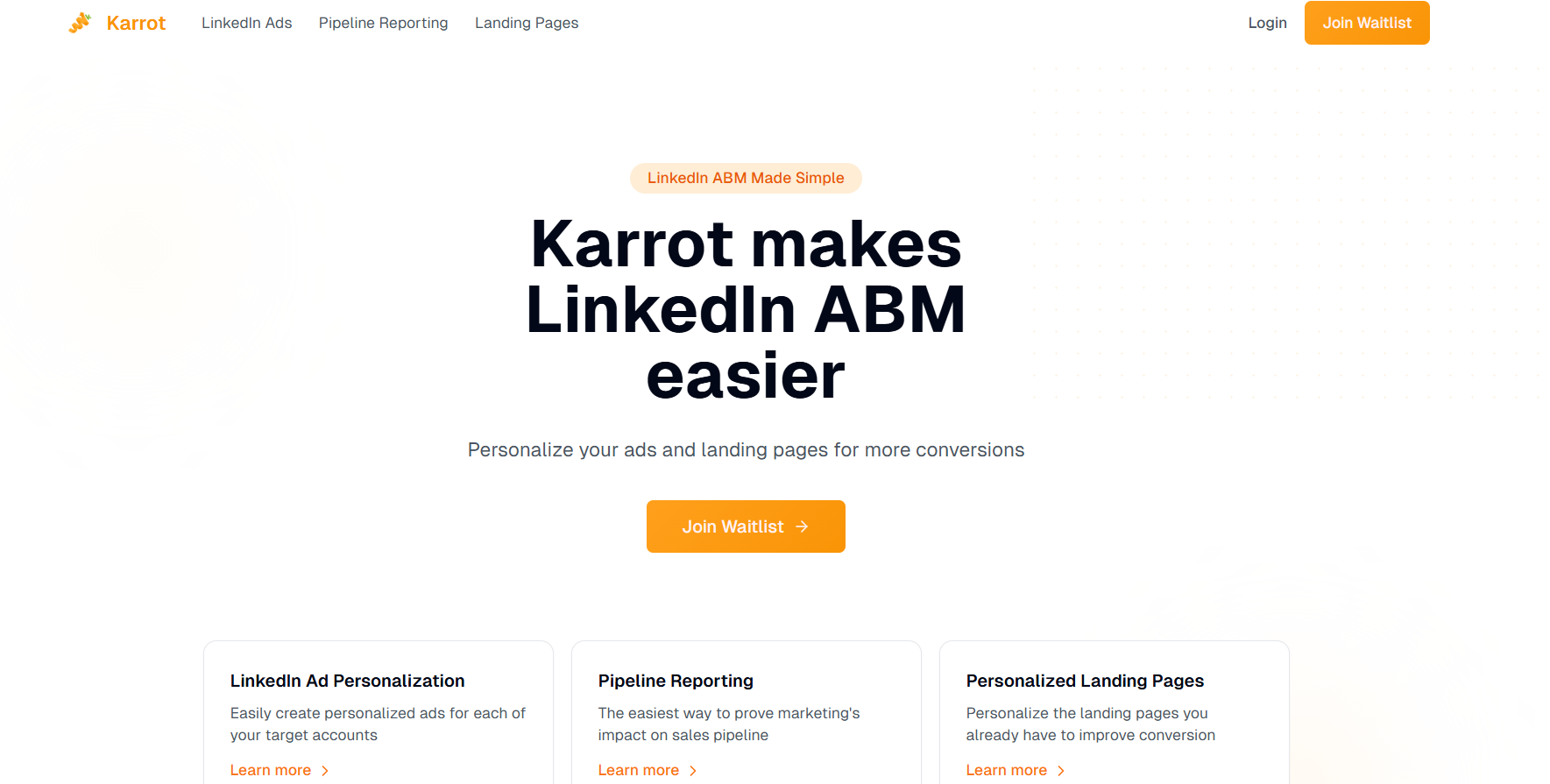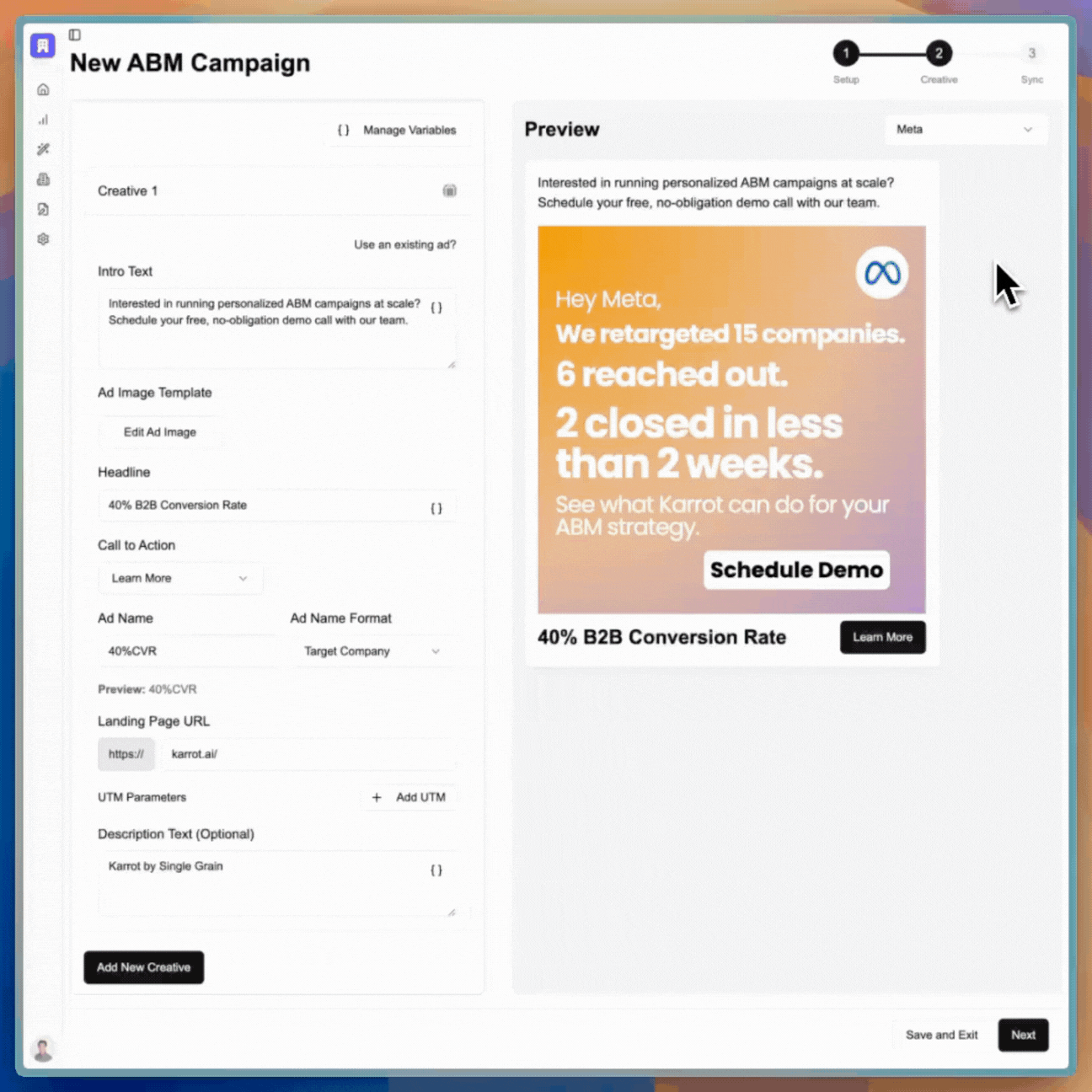How to Orchestrate Cross-Platform Account Journeys With AI
Picture this: A prospect visits your website from a LinkedIn ad, downloads a white paper, receives three nurture emails, visits your booth at a trade show, then finally converts during a personalized demo — all while your AI system seamlessly tracks, learns from, and optimizes each touchpoint in real-time. This isn’t marketing science fiction; it’s the reality that forward-thinking organizations are already implementing to drive measurable revenue growth.
According to CSG’s analysis of Gartner’s 2025 Market Guide, 70% of enterprises plan to deploy AI-powered customer-journey orchestration platforms across all digital and assisted channels by 2025. The question isn’t whether your organization will adopt AI orchestration, but how quickly you can implement it effectively.
Key Takeaways
- AI orchestration goes beyond basic automation by analyzing real-time behavioral signals and predictive models to dynamically determine the next best action for each individual account, rather than following predetermined rules
- Unified data intelligence is the foundation for orchestrating cross-platform account journeys with AI, as more organizations are citing “disconnected channel data” as the biggest barrier to effective implementation
- Follow a crawl-walk-run implementation approach starting with data foundation building (months 1-3), then intelligent automation deployment (months 4-8), and finally full orchestration across all touchpoints (months 9-18)
- ROI is measurable and significant, with more brands using real-time AI-driven journey orchestration reporting double-digit increases in customer lifetime value within 12 months of deployment
- Start with high-impact integration opportunities by connecting your three most critical data sources (typically CRM, marketing automation, and website analytics) to create unified customer profiles that enable intelligent decision-making
TABLE OF CONTENTS:
Beyond Basic Automation: What AI Orchestration Really Means
Most marketing teams believe they’re orchestrating customer journeys when, in reality, they’re merely automating individual touchpoints. True AI orchestration goes far deeper. It’s the strategic coordination of multiple AI systems, data sources, and decision engines working together to create seamless, context-aware experiences across every platform where your prospects engage.
Traditional marketing automation follows predetermined rules: “If someone downloads this asset, send this email.” AI orchestration, by contrast, analyzes real-time behavioral signals, contextual data, and predictive models to dynamically determine the next best action for each individual account. It’s the difference between following a script and conducting a symphony.

Consider how an enterprise software company transformed its ABM by implementing Karrot.ai. They achieved a 187% increase in target account engagement thanks to AI-driven personalization.
The Three Pillars of Successful AI Orchestration
Effective cross-platform AI orchestration rests on three foundational pillars that work in concert to deliver transformative results. Understanding these pillars helps marketing leaders build systems that scale while maintaining the personal touch that drives conversions.
Pillar One: Unified Data Intelligence
The foundation of any successful orchestration strategy lies in breaking down data silos. This isn’t just a technical challenge; it’s a strategic imperative. Your AI systems require a comprehensive view of each account’s journey to make informed decisions. This means integrating data from your CRM, marketing automation platform, website analytics, social media interactions, sales conversations, and support tickets into a unified customer data platform.
Pillar Two: Intelligent Process Automation
While data provides the foundation, intelligent automation delivers the execution. This goes far beyond sending automated emails. It’s about creating adaptive workflows that respond to changing conditions and optimize themselves based on performance data.
Advanced AI orchestration platforms use machine learning algorithms to continuously refine trigger conditions, content selection, timing optimization, and channel preferences. They learn from every interaction, gradually developing more sophisticated decision-making capabilities.
Pillar Three: Centralized Orchestration Management
The third pillar involves governance, monitoring, and strategic oversight to ensure your AI systems remain aligned with business objectives. This includes performance tracking, compliance management, human-in-the-loop oversight for critical decisions, and continuous optimization based on ROI metrics.
| Orchestration Component | Traditional Approach | AI-Powered Approach | Business Impact |
|---|---|---|---|
| Lead Scoring | Static point-based rules | Dynamic predictive modeling | 3x improvement in qualified lead identification |
| Content Personalization | Segment-based messaging | Individual account context | 40-60% increase in engagement rates |
| Channel Optimization | One-size-fits-all timing | Behavioral preference learning | 25-35% improvement in response rates |
| Sales Handoff | Manual qualification process | Intelligent readiness scoring | 50% reduction in time-to-conversion |
Your Crawl-Walk-Run Implementation Roadmap
Innovative marketing leaders approach AI orchestration implementation strategically, building capabilities incrementally while proving ROI at each stage. Here’s the proven roadmap that minimizes risk while maximizing learning and results.
Crawl Phase: Establish Your Data Foundation (Months 1-3)
Begin by auditing your current data ecosystem and identifying opportunities for integration. Focus on connecting your three most critical data sources. Typically, your CRM, marketing automation platform, and website analytics. Implement basic cross-platform tracking and establish unified customer profiles.
During this phase, start with simple AI-powered optimizations like using AI for paid ad optimization to build confidence and demonstrate quick wins while your broader orchestration infrastructure develops.
Walk Phase: Deploy Intelligent Automation (Months 4-8)
With your data foundation solid, begin implementing AI-driven automation across 2-3 key touchpoints. This might include intelligent lead routing, dynamic content personalization, or predictive send-time optimization. Focus on workflows that directly impact pipeline velocity and conversion rates.
Run Phase: Full Orchestration Deployment (Months 9-18)
The final phase involves deploying comprehensive AI orchestration across all customer touchpoints. This includes advanced capabilities like predictive journey mapping, autonomous decision-making for low-risk interactions, and sophisticated attribution modeling that proves ROI across complex, multi-touch customer journeys.
Proving ROI: The Financial Impact of AI Orchestration

The business case for AI orchestration isn’t theoretical. Organizations are reporting measurable financial returns within months of implementation. This stems from AI orchestration’s ability to optimize the entire customer journey, not just individual touchpoints. When prospects receive perfectly timed, contextually relevant interactions across every channel, conversion rates improve dramatically while sales cycles compress.
Overcoming the Biggest Implementation Barriers
While the benefits are clear, successful AI orchestration implementation requires navigating several common challenges that can derail even well-intentioned initiatives.
Data Integration Complexity
The organizations struggling with disconnected channel data aren’t facing a technology problem; they’re facing a strategy problem. Successful implementations start with clear data governance frameworks and API-first integration strategies that prioritize flexibility and scalability over quick fixes.
Talent and Expertise Gaps
Many marketing teams feel overwhelmed by the technical complexity of AI orchestration. The solution lies in partnering with experienced agencies or consultants who can provide both strategic guidance and hands-on implementation support while building internal capabilities over time.
Technology Stack Optimization
Rather than replacing existing systems entirely, successful organizations focus on enhancing their current technology stack with AI orchestration layers that unify and optimize existing investments. This approach reduces risk while accelerating time-to-value.
For organizations looking to accelerate their journey orchestration efforts with expert guidance, platforms like Karrot.ai specialize in helping B2B companies implement AI-powered personalization at scale. Get a Free Audit to discover specific opportunities for implementing cross-platform AI orchestration in your marketing strategy.
Choosing the Right Orchestration Platform
Orchestration platforms have evolved rapidly, with solutions ranging from enterprise-grade comprehensive platforms to specialized tools that excel in specific use cases. The key is selecting technology that aligns with your current capabilities while providing room for growth.
Look for platforms that offer visual workflow builders for ease of use, robust API connectivity for integration flexibility, advanced analytics for performance monitoring, and scalable architecture that grows with your needs. Most importantly, prioritize platforms with proven track records in your industry and strong customer support during implementation.
Future-Proofing Your Orchestration Strategy
As we progress through 2025, AI orchestration capabilities will continue to evolve rapidly. Successful marketing leaders are already preparing for the next wave of innovations, including more sophisticated agentic AI systems that can autonomously manage complex decision trees and the integration of generative AI, which creates dynamic, personalized content in real-time.
The organizations that will dominate their markets are those building orchestration foundations today while maintaining the flexibility to adopt emerging capabilities as they mature. This means investing in platforms and processes that prioritize adaptability and continuous learning over rigid, predefined workflows.
Your Next Steps Toward AI Orchestration Mastery
The transformation from disconnected touchpoints to orchestrated customer journeys doesn’t happen overnight, but it begins with a single strategic decision: committing to unified, AI-driven customer experiences that prioritize revenue growth in every interaction.
Begin by auditing your current customer journey mapping capabilities and identifying the highest-impact integration opportunities. Focus on connecting data sources that will provide immediate visibility into account-level behavior and preferences. Most importantly, start measuring the metrics that matter: pipeline velocity, conversion rates, and customer lifetime value, so you can prove the ROI of your orchestration investments.
The 70% of enterprises deploying AI orchestration platforms by 2025 aren’t just following a trend. They’re positioning themselves to capture the competitive advantages that come from truly understanding and serving their customers across every touchpoint. The question isn’t whether AI orchestration will transform B2B marketing, but whether your organization will lead that transformation or struggle to catch up.
Ready to turn your disconnected touchpoints into a revenue-driving orchestration strategy?
Frequently Asked Questions
-
What's the difference between marketing automation and AI orchestration?
Marketing automation follows predetermined rules like “if someone downloads this asset, send this email,” while AI orchestration analyzes real-time behavioral signals and predictive models to dynamically determine the next best action for each individual account. It’s the difference between following a script and conducting a symphony, where AI continuously adapts based on context and performance data.
-
What are the three essential pillars for successful AI orchestration?
The three pillars are unified data intelligence (breaking down data silos to create complete customer views), intelligent process automation (adaptive workflows that optimize themselves based on performance), and centralized orchestration management (governance and strategic oversight to ensure alignment with business objectives). These work together to deliver seamless, context-aware experiences across all platforms.
-
How long does it typically take to implement AI orchestration?
A strategic crawl-walk-run approach takes 9-18 months total: months 1-3 focus on data foundation building, months 4-8 involve deploying intelligent automation across key touchpoints, and months 9-18 encompass full orchestration deployment across all customer interactions. This phased approach minimizes risk while proving ROI at each stage.
-
What kind of ROI can I expect from AI orchestration?
Organizations experience a 3x improvement in qualified lead identification, a 40-60% increase in engagement rates, and a 50% reduction in time-to-conversion.
-
What's the biggest barrier to implementing AI orchestration successfully?
Disconnected channel data is cited by many organizations as the single greatest barrier to effective AI orchestration. This requires integrating data from CRM, marketing automation, website analytics, social interactions, and support tickets into a unified customer data platform, providing AI systems with the complete context needed for intelligent decisions.
-
What should I look for when choosing an AI orchestration platform?
Prioritize platforms with visual workflow builders for ease of use, robust API connectivity for integration flexibility, advanced analytics for performance monitoring, and scalable architecture that grows with your needs. Most importantly, select platforms with proven track records in your industry and strong customer support during implementation.
-
Where should I start if I want to begin implementing AI orchestration?
Start by auditing your current data ecosystem and connecting your three most critical data sources—typically your CRM, marketing automation platform, and website analytics. Focus on creating unified customer profiles and implementing basic cross-platform tracking while identifying the highest-impact integration opportunities for your specific business.




